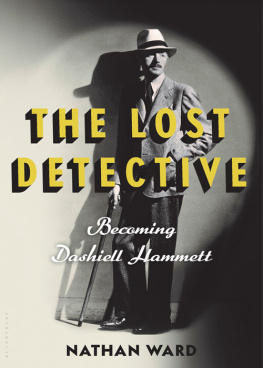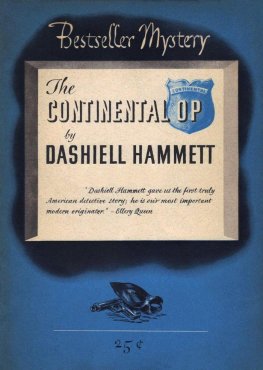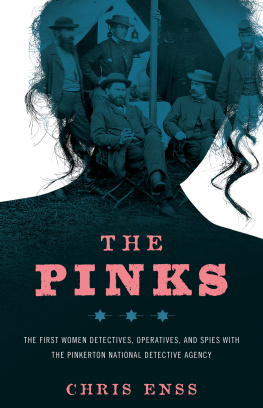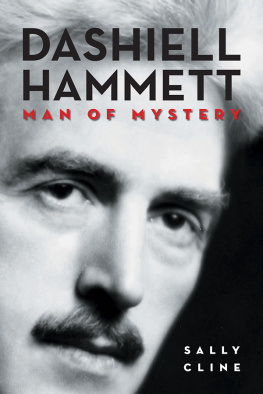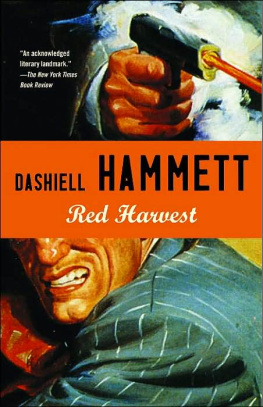For Katie, as ever.
And for the Calhouns,
who showed me the West.

CONTENTS
[W]hatever the intrinsic moral life or character of the detective may be, his art is a devilish one, and civilization is responsible for it.
OFFICER GEORGE S. McWATTERS, KNOTS UNTIED (1871)
The cheaper the crook, the gaudier the patter.
SAM SPADE IN THE MALTESE FALCON (1930)
Ive testified before juries all the way from the city of Washington to the state of Washington, and Ive never seen one yet that wasnt anxious to believe that a private detective is a double-crossing specialist who goes around with a cold deck in one pocket, a complete forgers outfit in another, and who counts that day lost in which he railroads no innocent to the hoosegow.
DASHIELL HAMMETT, ZIGZAGS OF TREACHERY (1924)
At a cocktail party in Manhattan in late January 1939, a gaunt, elegant man in a double-breasted suit sat down and laid one of his long pale hands before a fortune-teller. The man was quiet and watchful, his face handsome in a lean and angular way, his age blurred a bit by his grizzled mustache and pompadour gone prematurely white. He might have cradled a drink with one hand while he offered the palm of the other for interpreting, from his tapering fingers to the intersection of his fate and heart lines.
Had the fortune-teller examined both his hands, she might have noticed clues that he hadnt always lived so well. Down at the fleshy part of his left palm, near the curved base of his thumb, was the remaining tip of a knifepoint lodged there during a time in his life when he didnt dress so beautifully or live at the Plaza. Whether or not he told the reader his profession was largely unnecessary: he was widely recognized from the cover of his last book, a popular novel that had inspired three movies in four years.
Assembling her available evidence, the reader offered her predictions for the coming decade, which the man happily passed on in a letter to his older daughter:
I was told that the most successful years of my life would be from 1941 to 1948, that most of my real troubles were behind me, that I was going to make a lot of money out of two entirely different lines of work, plus a sideline, and that Ill have most luck with women born in December. So Id be sitting pretty if I could make myself believe in palmistry, and if I knew any women born in December!
In fact, while he would continue to have luck with all sorts of women, some even born in December, on the other front his best years were well behind him. Ahead were war and a grateful return to the army, a prison term and blacklisting, hard drinking, illness, and poverty. He would never finish another book, though he would start a number of them, but the lasting mystery of Dashiell Hammett was not why he stopped writing, since he hadnt. It was how he came to the writing life at all.
* * *
Scars had made him credible. When they were young, Hammett used to show his daughters the marks of his old tradelet them see the cuts on his legs or feel the dent in his skull where hed once been knocked by a brick. His old wounds summoned up stories from a romantic past: he told some people that the brick had come from an angry striker while he was doing anti-union work for Pinkertons, but both Hammett girls remembered another version, more typical of their father for its mingling of self-mockery with suspense. He was, after all, a man whose roof perch had once collapsed while on stakeout and who had fallen from a taxicab during a city chase.
One of my earliest memories is of getting to feel the dent in his head from being hit by a brick when he bungled a tailing job, remembered his younger daughter, Jo Hammett, and he let me see the knife tip embedded in the palm of his hand.
It might have been thrown by an angry striker, as Hammett occasionally claimed, or have been dropped on him by a shadow subject who surprised him in San Francisco, as reported by his wife, who watched him suffer for days afterward in a chair. In the thirties, he gave another account of being wounded in the course of arresting a gang of negroes accused of stealing dynamite in Baltimore during the war. When I got inside this house men were being knocked around in fine shape. In the excitement I had a feeling something was wrong but I could not figure out what it was till I happened to look down and saw this Negro whittling away at my leg. In the end, there was the dent and the scars and the gift for storytelling, his conversation hinting at a detecting career as colorful as it was peripatetic: the jewel thief nicknamed the Midget Bandit, in Stockton, California; the swindler in Seattle; the forger he trapped in Pasco, Washington; the imposing railroad worker he tricked into custody in Montana; and the Indian he arrested for murder in Arizona.
How did he get from detective to writer? Hammett never answered satisfactorily. He was a Pinkerton, then he was very sick, then he was peddling stories to magazines, with apparently little more ambition than that, at least at the beginning. Maybe man-hunting isnt the nicest trade in the world, says the skinny, ungentlemanly operative in Hammetts first detective story, The Road Home, but its all the trade Ive got. It was the trade Samuel Dashiell Hammett knew best at age twenty-eight when his bad lungs forced him to give it up.
Three years after he left Pinkertons, on a late-summer day in 1925, Josephine Dolan Hammett took a photograph of her husband sitting in the sun up on the roof of their apartment building, on Eddy Street in San Francisco: a young man wearing a tweed cap and sweater-vest, looking confident and wickedly thin, strikes a match across the sole of his shoe to light a gauzy cigarette he has rolled himself, like someone he might have invented downstairs at his writing table. The picture shows a graying young father who writes with growing poise about the rough types and places he used to know. By the mid-1920s, Hammetts detective experiences were like a set of tools he rummaged through and sharpened as needed for his craft.
Shadowing is the easiest of detective work, he boasted as an ex-Pinkerton, except, perhaps, to an extremely nervous man. You simply saunter along somewhere within sight of your subject; and, barring bad breaks, the only thing that can make you lose him is overanxiety on your own part. The literary people with whom he shared such wisdom ate it up.
Hammett might never have written anything but love poetry and ad copy had he not first taken the rough detour into detective work. It gave him authority, he explained later, as well as a subject, enabling him to lecture his fellow crime writers in book reviews about the difference between a revolver and an automatic, for instance, or on how counterfeiting schemes really worked, what it felt like to be stabbed or clubbed unconscious, or where to find the best fingerprints. It would be silly to insist that nobody who has not been a detective should write detective stories, he declared, but he didnt seem to think it was all that silly if it sifted out the lazier writers.
At the time he started sending out stories in the early 1920s, Hammett was not alone in looking at American urban life in a new, unsparing way, but among writers he was a rarity in having such experience with criminals and their gaudy talk. I can do better than that, hed said to his wife early on after reading pulp magazines in the San Francisco Public Library, and it turned out that he could. That summer of 1925, when he took the portrait on the roof, his health was bad, but he nevertheless continued publishing his series of increasingly popular crime stories featuring a nameless operative for the fictional Continental Detective Agency, Op Number 7. If you read his Op stories in order, you can watch a sickly ex-detective in his late twenties, with an eighth-grade education, gradually, improbably, teach himself to write, mentored by criminologists, historians, and novelists he brought home from what he called his university, the public library.
Next page
